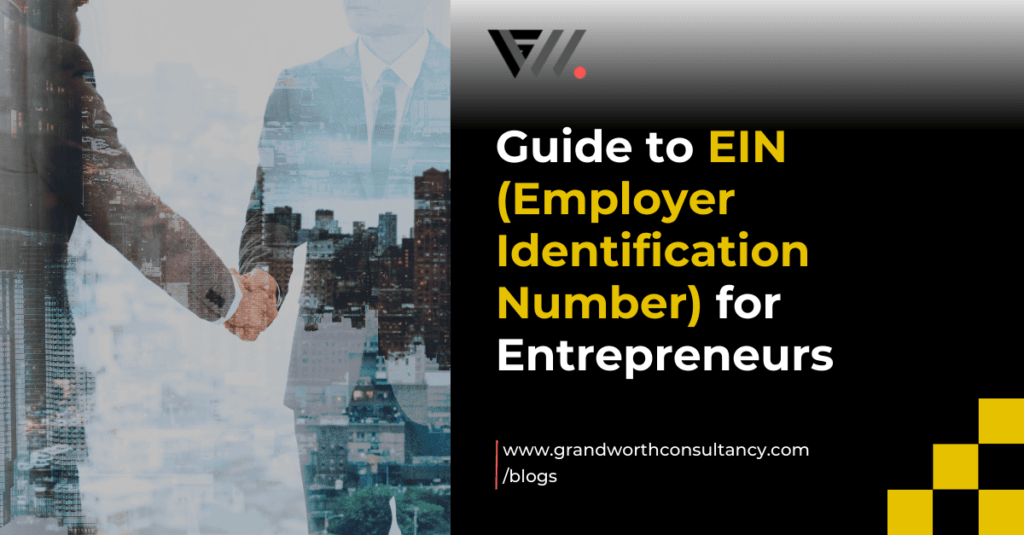Starting a business comes with various responsibilities, and one of the most important is securing an Employer Identification Number (EIN), also known as the Federal Employer Identification Number (FEIN). This unique 9-digit number is issued by the IRS (Internal Revenue Service) to identify your business for tax and other official purposes. In this guide, we’ll walk you through everything you need to know about EIN, when you need it, and how to apply for it.
What is an EIN (Employer Identification Number)?
An EIN is essentially the business version of a Social Security Number (SSN). Just as an SSN is used to track individuals for tax purposes, an EIN is used by the IRS to track business activities.
Though it is not mandatory for every business, obtaining an EIN is highly recommended. It helps separate your business’s tax responsibilities from your personal finances, reduces the risk of identity theft, and is required for certain business activities. An EIN is sometimes referred to as a Federal Tax Identification Number (FTIN).
When Do You Need an EIN?
You may be wondering, “Do I really need an EIN for my business?” The answer depends on several factors. Let’s break down when you must have an EIN and why it’s beneficial even if it’s not required.
You need an EIN if:
- You operate a corporation or a partnership.
- You plan to hire employees.
- You are required to file certain tax returns.
- You need to withhold taxes from employee wages.
- You have a Keogh plan (also known as a solo 401(k) retirement plan).
- Your business is involved in industries that require federal excise taxes.
- Your business has filed for bankruptcy.
In short, if your business has any employees, is a corporation or partnership, or falls under specific tax regulations, you will need an EIN.
Even if not required, consider getting an EIN if:
- You plan on opening a business bank account.
- You want to keep your business finances separate from your personal ones.
- You want to protect your identity and reduce the risk of fraud.
Non-U.S. Citizens:
You don’t need to be a U.S. citizen to apply for an EIN. As long as you are conducting business in the U.S., you can (and should) apply for one.
Who is Eligible for an EIN?
If you’re still unsure whether you need an EIN, here’s a quick checklist of businesses that are eligible for an EIN:
- Business owners without employees but planning to hire within the next 12 months.
- Businesses with a Keogh plan or other retirement plans.
- Any business that deals with federal excise taxes.
- Businesses that have filed for bankruptcy.
If your business meets any of these criteria, applying for an EIN is not only necessary but also beneficial in the long run.
How to Apply for an EIN (FEIN)
The IRS has made it straightforward for businesses to apply for an EIN, and best of all, it’s free. Here’s a step-by-step guide on how to apply:
Step 1: Gather Required Information
Before applying, make sure you have the following details on hand:
- Business Name: Your company’s legal name.
- Business Address: Mailing and physical address of your business.
- Responsible Party: The name and contact information of the person responsible for the business (usually the owner).
- Entity Type: Whether your business is a sole proprietorship, partnership, corporation, LLC, etc.
- Industry: Type of business you’re involved in, such as eCommerce, manufacturing, etc.
- Reason for EIN: Why you’re applying for an EIN (hiring employees, opening a bank account, etc.).
- Employee Information: The number of employees you expect to hire within the next year and the date you plan to begin paying them.
Step 2: Choose Your Application Method
There are several ways to apply for your EIN:
- Online: If you’re a U.S. citizen, the quickest way is to apply directly through the IRS website. You can receive your EIN instantly once approved.
- Phone: U.S. applicants can also apply by phone.
- Fax or Mail: For non-U.S. applicants, you can apply via fax or mail.
- Third-Party Service Providers: While the application is free through the IRS, you can opt to use a third-party service provider to help you with the process. Keep in mind, they may charge you for their services.
Step 3: Submit the Form SS-4
You will need to fill out Form SS-4, which is available on the IRS website. This form collects information about your business and its structure.
Step 4: Wait for Confirmation
After submitting your application, you will receive your EIN from the IRS. If you apply online, you’ll get your EIN immediately. For fax or mail applications, it may take several weeks to process.
Important Notes:
- Filing for EIN is free: The IRS does not charge any fees for applying for an EIN. However, if you use a third-party service provider, they may charge a fee.
- Accuracy is crucial: Be sure to fill out the form carefully and provide accurate information. Mistakes can delay the process.
- Business Location: The principal business must be located in the United States or its territories to be eligible for an EIN.
Final Thoughts
Whether you’re just starting a new business or you’re looking to grow and hire employees, an EIN is essential for smooth operations. It helps separate your personal and business finances, ensures compliance with tax laws, and adds an extra layer of security to your business’s identity.
The process is simple and free, so there’s no reason to delay applying for your EIN. Visit the IRS website for more detailed information and start your application today!
By securing an EIN early on, you’ll be setting your business up for success and ensuring that your tax responsibilities are well managed.







